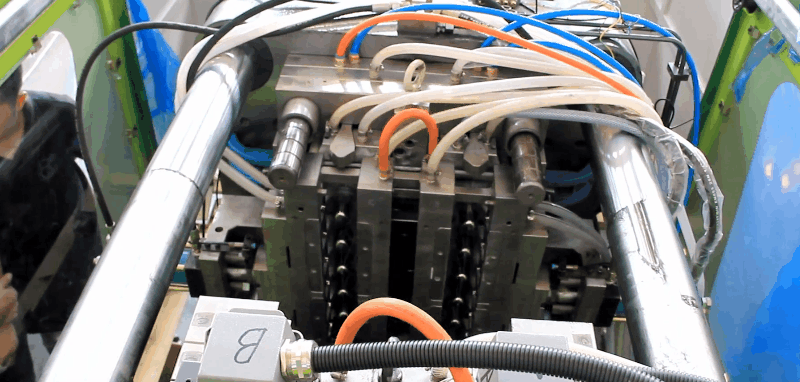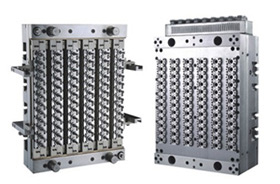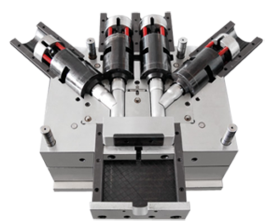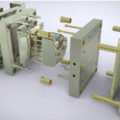The plastic product recycling symbol was formulated in 1988 by the Society of the Plastics Industry (now renamed Plastics Industry Association). This set of logos stamps plastic material identification codes on containers or packaging materials, plastic recycling numbers 1 to 7, so that people can simply join the ranks of recycling without having much work to learn the similarities and differences of various plastic materials. Every plastic container has a plastic recycling symbol, usually at the bottom of the plastic containers. Each number represents a kind of plastic container. They are made of different materials, and there are also different contraindications. The recycling mark is also a health certificate The plastic recycling symbol is a triangle symbol, usually at the bottom of the plastic container. There are numbers from 1 to 7 in the triangle. Each number represents a different material. Therefore, the different numbers in the recycling mark indicate which resin the product is made of. If the product is made of several different materials, What is marked is the main and basic materials of the product. Remember,
Read more →Key Technologies for PET Preform Injection Molding The chemical name of PET is polyethylene terephthalate, also known as polyester. At present, GF-PET is the most used by customers, mainly for bottle preforms. PET has better rheology in the molten state, and the pressure has a greater effect on viscosity than temperature. Therefore, We mostly adjust the injection pressure to change the fluidity of the melted PET material. 1. Processing of PET Material before Injection Molding Because PET macromolecules contain fat bases and have certain hydrophilicity, pellets are more sensitive to water at high temperatures. When the moisture content exceeds the limit, the molecular weight of PET decreases during processing, and the product becomes colored and brittle. Because of this, the materials must be dried before processing. The drying temperature is 150°C for more than 4 hours, generally 170°C for 3-4 hours. The air shot method can be used to check whether the material is completely dry. The proportion of recycled materials should generally not exceed 20%, and the recycled materials must be thoroughly dried. 2. How to Selection a Right
Read more →There are thousands of plastic injection mold makers in China today. It makes lots of people confused about how to choose a plastic mold maker correctly or to pick up the right mold supplier for your project. Here are some guidelines you should know to help you out with the problem. 1st of all, we must know our requirements for the exact product for the project. Then we can sort out how to choose a right mold maker to manufacture our mold. Here we simply list the key points for different grand mold manufacturers as below: 1. Top Grand Injection Mold Manufacturers: A professional injection mold manufacturer has an experienced team for mold design, manufacturing, quality control, inspection, and many top machines in the industry. Including but no only: high-speed CNC lathes, CNC milling machine, CNC machining centers, mirror spark machines, slow-moving wire, precision grinders, high precision injection molding machines, two-dimensional, three-dimensional testing equipment, etc. It is suitable for molds with complete surface treatment, perfect interface, flawless product assembly, reasonable and standardized internal structure, and mold tolerance of about 0.02mm.
Read more →The PET preforms most used of PCO neck finish ( PCO = Plastic Closure Only ) are two types: PCO 1881 neck finish and PCO 1810 bottle neck finish. At the beginning of November 2006, the ISBT (International Society of Beverage Technologists) agreed on a new lightweight standard for 28mm preform neck finish called PCO 1881, which provides a weight saving of 1,3 g (26%) compared to current type bottle neck PCO 28 (3.74 g vs. 5.05 g) and of 2,5 g (40%) compared to BPF neck finish. In particular, it includes good venting capability due to sufficient thread length (650° thread travel, extendable to 680°) and adequate positioning of vertical slots across the threads; and efficient closure tamper-evident (TE) band functioning due to special TE bead profile. The SuperShorty PCO 1881 bottle neck is a 28-mm closure designed for a short-height PET preform neck finish. The biggest difference between PCO 1881 & PCO 1810 is the height of them. PCO 1881 is the with the height 17mm while PCO 1810 has 21mm. The neck finish PCO 1881 is about
Read more →Injection molding cycle time calculation is one of the most important works for an injection molding engineer. Injection molding is a cyclic process. In order to calculate the cycle time, you should calculate operating cycle time for all the molding machine`s movement. The whole operating cycle time includes injection time/filling time, Pressurized Holding Time, Polymer Melting/Charging Time, Cooling Tim, Machines basic movement(Mold open & close) operating Time, Ejection, Drop, Robot Time, etc. Total injection molding production cycle time calculation formula: T=Ti + Tp + +Ts + Tm + Tc + To +Te
Read more →Plastic Mold Polishing Techniques is very important for plastic molds manufacturing. It affect a lot on the plastic molds` quality. It helps to get a beautiful surface and makes ejection smooth. Mold polishing generally uses oil stone, sandpaper, polishing paste, etc. to grind the cavity surface of the mold, so that the working surface of the mold can be as bright as a mirror. It is called mold polishing. Mold polishing has two purposes; one is to increase the finish of the mold, so that the surface of the product from the mold is smooth, beautiful, and beautiful, and the other is to make the mold easily demolded, so that the plastic is not stuck on the mold and cannot be taken off . Polishing is a very important process in the mold making process. With the increasingly widespread use of plastic products, the appearance quality of plastic products is also getting higher and higher. Therefore, the surface polishing quality of plastic mold cavity should be improved accordingly, specially Mirrors and high-gloss high-gloss surfaces require higher mold surface roughness and
Read more →Difference Between Three-plate Mold and Two-plate Mold The three-plate mold refers to a set of mold blanks consisting of A plate, B plate, and nozzle stripping plate; the two-plate mold batch is composed of A plate and B plate. The difference between the three-plate mold and the two-plate mold is that there is a nozzle stripper. From the perspective of mold structure, the guide posts of the three-plate mold are in the front mold, and the guide posts of the two-plate mold are in the rear mold. From the point of view of use, products with a glue inlet (fine nozzle) feeding method use a three-plate mold; while plastic products with a large nozzle feeding method use a two-plate mold. Three-plate mold structure description: The spout edge nail cooperates with the guide sleeve, and then the front mold is guided (the straightening spout plate panel A plate). Secondly, the spout edge nail is not added with a guide sleeve on the entire rear mold, and the template is avoided. Therefore, the spout nail only guides the front mold, while the
Read more →Advantages and Disadvantage of hot runner system Many customers ask us what is the advantages and disadvantage of hot runner system on plastic injection mold? Here we list some of the hot runner`s advantages and disadvantage for your information. ◆ Advantages of hot runner system (1) No nozzle material, no post-processing is required, so that the entire molding process is fully automated, saving working time and improving work efficiency. (2) The pressure loss is small. The temperature of the hot runner is equal to the temperature of the injection nozzle of the injection molding machine, which avoids the surface condensation of the raw material in the runner and the injection pressure loss is small. (3) The repeated use of nozzle materials will degrade the performance of plastics, and the use of hot runner system without nozzle materials can reduce the loss of raw materials and thus reduce product costs. The temperature and pressure in the cavity are uniform, the stress of the plastic parts is small, and the density is uniform. Under a lower injection pressure and a shorter molding
Read more →Plastic mold is an abbreviation of molds includes compress molding, extrusion molding, injection molding, blow molding and low foam molding. It is a tool to make a fixed shape products with kinds of plastics. The tool is mostly have two parts called male mold and female mold. There is some empty space after the male mold and female mold closed. That is the plastic product`s shape. We put some melt plastic to fill the empty space and then we got a plastic part after it was cured. Please refer to below picture to help you understand the plastic mold definition. A series of plastic parts with different shapes and different sizes can be produce by changing the mold convex and concave molds and the auxiliary molding system. Plastic molds is the base factor of modern industry, and the release of new products will involve plastics parts. Plastic Mold Structure Plastic molds mainly includes a concave mold with a variable cavity composed of a concave mold combined substrate, a concave mold assembly and a concave mold combined card board, a convex
Read more →It is important to select suitable models of plastic machinery for your plastic products. You will learn 7 proved procedures to choose right models of injection molding machines. Meanwhile, you will grasp 4 ways to calculate locking force of clamping units. You will be an expert in selection of models after minutes-reading. In general, most customers who have been in plastic industry for many years have the ability to select suitable model of plastic injection machines for their own projects. But sometimes, customers will require support from us, the manufacturers of plastic injection moulding machines to give suggestion on correct models of machines. Sometimes, customers only have samples in hand or just idea of new item in their brains, and then they need to be sure if our machines can make their new products or which model is best. And customer maybe require complete solution for efficient production. For example, for some special plastic parts, the production line will require accumulator, close loop, injection compress, etc. So, it is very critical to select right model of plastic injection machines. We
Read more →What Are Injection Molding Machine Specifications Injection Molding Machine`s Specifications mostly includes four units: Clamping Unit, Injection Unit, Hydraulic Unit, and Electric Unit. And there are many main index parameters in each unit. All brands of injection molding machines should list this index parameter for buyers’ information to select the right machine. No matter it is Husky, Toshiba, Nissei, Engel, JSW, Toyo, Haitian, Sumitomo, Mitsubishi, Arburg, Battenfeld, LG, CLF, Windsor or Demag injection molding machine. While selecting an injection molding machine, you must understand and value of the specifications of plastic Injection Molding Machine: Feel Free to Contact Us if Any Questions
Read more →How to Inspect the Load Cell in Injection Molding Machines A precise load cell has been installed to carry out pressure control of closed-loop. The load cell may lose its correct zero point being affected by load or temperature. After turning on the power of the injection machine, check the zero point of load cell by following the procedure below. A) Checking the load cell 1) Press [SERVO] of the PREPARATION button to turn off the servomotor. 2) Touch the INJECT screen selector button and the [INJECT] screen change button to display the [INJECT] screen. Then read the value of [INJ PRESS] on the screen. The normal range of pressure is within 1 MPa [145 psi]. B) Checking the zero point of load cell When the displayed value of injection pressure deviates from 1 MPa [145 psi] of range, check the zero point of load cell by following the procedure below. 1) Dismount the shaft Stop cover to remove the split collar connecting the screw and shaft S. (Refer to section 5.1.2 Replacing the Screw.) 2) Press [SERVO] of the
Read more →






